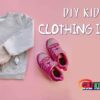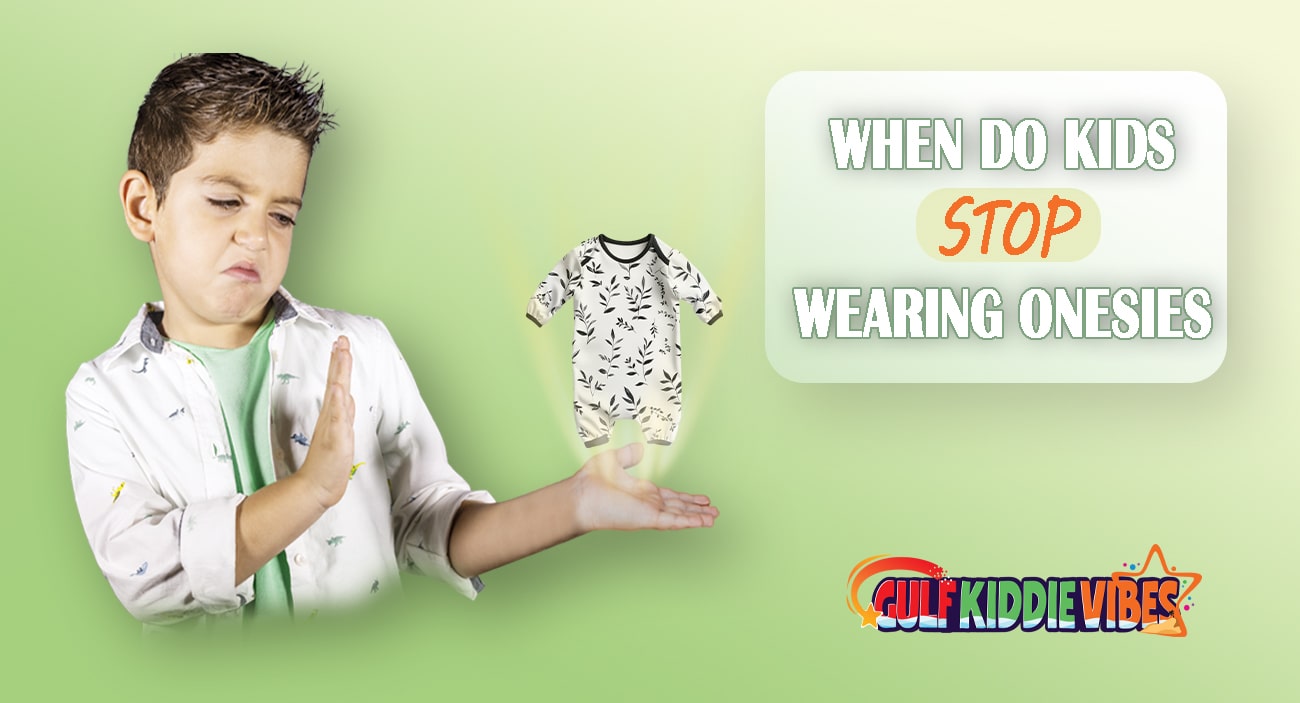
When Do Kids Stop Wearing Onesies? Expert Tips Inside
When do kids stop wearing onesies? Most toddlers transition between ages 2 and 4. This article explains how to know when your child is ready, tips for switching to two-piece outfits, and the best alternatives for comfort and warmth. Essential reading for parents!
Table of Contents
Is there a cuter outfit for your kids than a onesie? I certainly don’t think so, and I am not the only one. Onesies are the most versatile and common part of a child’s wardrobe from an early age. However, when do kids stop wearing onesies, or more accurately, when should parents stop putting them on their children?
Strictly speaking, kids between the ages of two and four should stop wearing onesies frequently, and kids over five shouldn’t wear onesies at all. This is a big problem, but not all kids are the same.
This is why this article will share all the information available to ensure parents know when their kids should stop wearing onesies. We will go over the age range and factors you should consider. I will share how to transition your kids from onesies to their alternatives and more.
What Are Onesies?
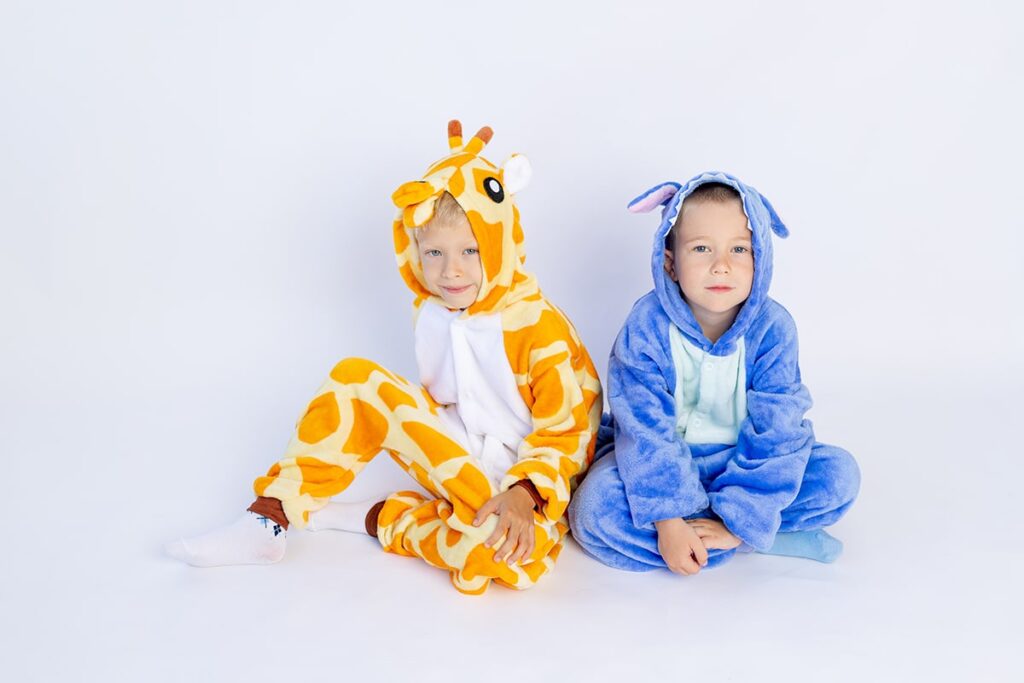
Before we discuss when kids should stop wearing onesies, some parents, new and old, might like an overview of what they are. There are many kinds of onesies, and not all are meant for everyday wear.
Onesies are typically one-piece outfits meant for infants and toddlers. They have snap closures at the bottom for easier bathroom access and can be worn as every day or sleepwear outfits.
Some parents, including myself, refer to them as bodysuits or infant rompers. But there are subtle differences. At the end of the day, onesies are meant to provide your little legend with comfort, security, and practicality.
Types of Onesies
As I said, you can now find all kinds of onesies for your kids in the market. Each of them has different features that might attract your attention. All of them allow for easier bathroom access and quick diaper change. Overall, onesies can be broken into three different kids. Here they are:
- Infant onesies: These are for infants and newborns. They are made with super-soft materials for extra comfort.
- Footed pajamas or sleepers: These cover the entire body and are great for keeping infants and toddlers warm during sleep.
- Toddler onesies: They have all the features of the infant ones, but they are just bigger.
Why Do Kids Wear Onesies?
Kids wear onesies for all kinds of reasons, but the main ones are for comfort and to allow parents to change diapers more easily. Alongside these reasons, there are other benefits to having kids wear onesies.
Benefits of Onesies for Babies and Toddlers
Here are some of the common benefits parents can enjoy by having their babies and toddlers wear onesies:
- Ease of diaper changes:
- As said before, all onesies have snap closures at the bottom, which allow parents to change their diapers. This is a very useful feature during nighttime and on-the-go situations.
- Comfort and warmth:
- Infants and toddlers require soft and snug feelings to stay calm and happy. Onesies, with their soft and warm materials, provide that. They provide complete coverage, thus keeping them cozy and happy during sleep.
- Cold weather protection:
- The material of a onesie ensures that an infant or toddler’s body temperature is always at the right range, especially during the colder seasons. Thanks to the materials, your kid won’t need multiple layers, thus reducing the chances of overheating.
- Simple dressing:
- Onesies are meant for quick and easy dressing, which is a massive help for parents during hectic times. Thanks to full body coverage, parents don’t need to worry about mixing and matching multiple items.
Emotional and Developmental Benefits
Aside from the physical benefits of onesies, they also provide emotional and developmental benefits as well. What are they? They are:
- Security:
- Infants and toddlers are known for being fussy and insecure, but the snug fit of onesies eliminates these issues. They help them feel more comfortable, warm, and secure, especially when they go to sleep.
- Independence:
- As toddlers grow, they learn to dress themselves more often. Onesies’ snaps make them easier to take off, which toddlers appreciate. The snaps also help to increase their confidence in dressing themselves.
When Do Kids Typically Stop Wearing Onesies?
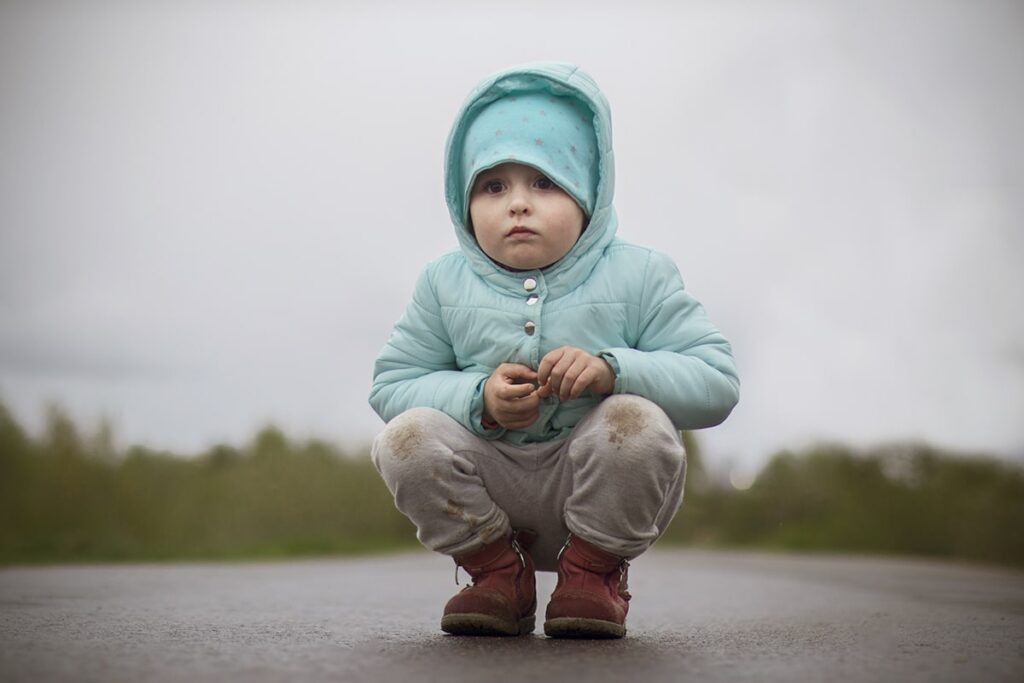
So you know why kids should wear onesies, but when do kids stop wearing onesies? I will discuss that now. As you might expect of a topic related to kids, the answer isn’t quite straightforward.
Age Range for Transitioning Out of Onesies
As I mentioned, most toddlers between the ages of two and four stop wearing onesies frequently, and those above four stop it completely. Again, like I said, there are some cases where kids older than five might wear onesies. This is because each child develops at a different pace and has different needs. Therefore, one toddler might stop wearing onesies completely at two years old, while another will wait until they are older.
It is up to the parents to monitor their child’s growth, preferences, and developmental milestones before they start the transition. It is important that you listen to me and understand that there is no “right” age for when kids stop wearing onesies. Your kids will have a much different development pace, so you will need to transition them to not wearing onesies at a different age.
Signs Your Child Is Ready to Stop Wearing Onesies
The signs for when you can start the transition are different for every child, but there are some signs parents should look out for. Here are the signs I have noticed and followed:
- Body growth:
- Toddlers over a certain age can’t wear onesies anymore; most onesies only go up to a certain size.
- So, if your toddler is too large or tall, they can’t continue to wear onesies.
- Showing discomfort:
- After a certain time, toddlers will show signs of not being comfortable in onesies.
- Parents should look for signs pointing to discomfort to start transitioning them to alternative dresses.
- Expressing independence:
- Toddlers over five and six will start to want to dress themselves and be more independent.
- Parents should start transitioning them to two-piece outfits, as it will be easier for them to dress themselves in those.
How to Transition Your Child Out of Onesies
So you figured out when your kids should stop wearing onesies, but now what? You might not know how to stop them or what they should wear from now on. That’s where this section will come in handy. I will share my steps to help my toddlers move on from onesies.
Introducing Two-Piece Outfits
The best choice for what to wear after onesies is typically two-piece outfits. I have found that toddlers who are starting to dress themselves find these kinds of outfits easier to manage. Two-piece outfits are simple to wear and are often made with the same materials as onesies, which makes toddlers feel more comfortable wearing them and dressing themselves.
I encourage parents to allow their kids to pick the outfits they want to wear. This will cut down on their resistance. You can also make picking out outfits an activity, making the process more engaging and fun for the kids.
Making the Transition Fun
Toddlers are known for wanting to do something new or unfamiliar, making the process much more difficult. That’s why if you are trying to make your kid transition from onesies to something else, you will need to make the process seem more engaging and fun.
I recommend playing dress-up with your toddler. Pick some superhero or movie character-themed clothes for your toddler to wear, or have them choose something. Doing so will make your toddler more excited to wear the new clothes.
Playing games to wear clothes is something that is done quite often, and I have seen positive results often.
Dealing with Resistance
All kids resist changes because they don’t know how to deal with them. When kids stop wearing onesies and transition to something else, they will not do so without tantrums. I encourage parents to be patient and calm in the face of resistance.
You need to work slowly when transitioning. Start by mixing some two-piece outfits in between onesies to make them more familiar to your kids. Have your toddler wear the new outfits during the day while sleeping in onesies at night.
Provide positive encouragement while helping your toddler break their dependence on onesies. Please encourage them to wear different outfits, and don’t get frustrated when they resist you.
Alternatives to Onesies for Older Kids
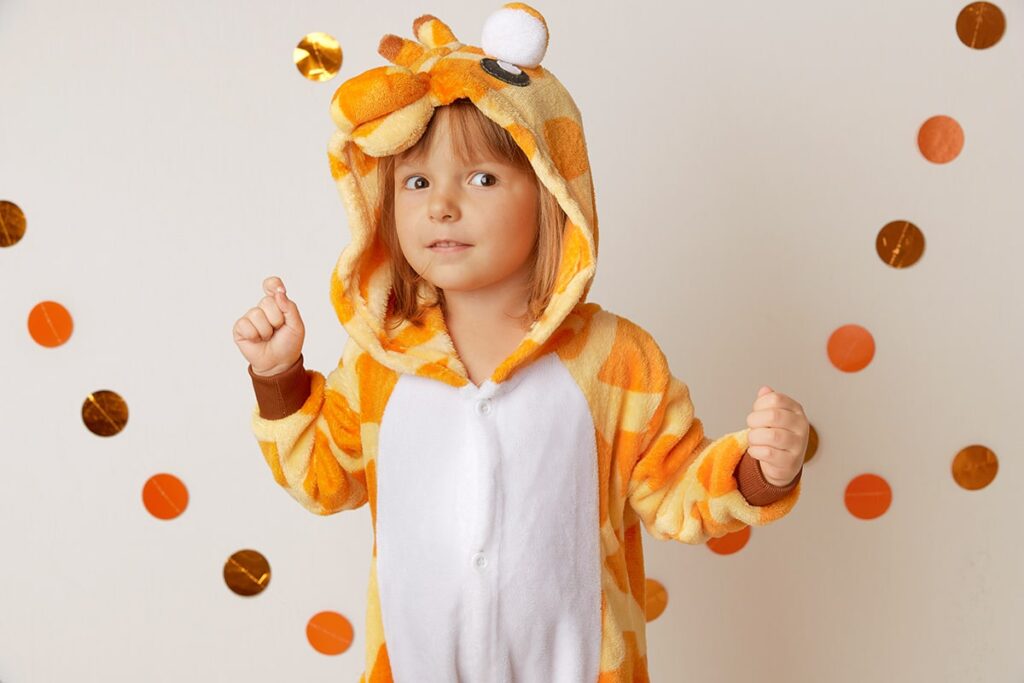
Knowing when kids stop wearing onesies is all well and good, but you also need to know what they will wear from now on. There are many alternatives available, of course, but not all of them will be best for your kids. Let’s go over some of the best ones:
Pajama Sets
Pajama sets are the most common choice for alternatives to onesies because they are so versatile. They are two-piece outfits, meaning older toddlers will have no problem putting them on or off. They are quite comfortable, so they can be day or night outfits for your little one.
When you are looking to buy a set, make sure it is made from similar materials as onesies to make the transition easier. Once the kids are comfortable, you can find sets made with other materials if you want or need to.
Look for sets that provide a snug and warm fit because your kids will want to be secure while they sleep. The added warmth will also ensure their body temperature is properly regulated.
Nightgowns
Nightgowns are an excellent alternative to onesies because they are one-piece outfits as well. However, they come in a larger size, so they are ideal for toddlers who have outgrown onesies. Since nightgowns come in a larger size, they are looser-fitting, comfortable, and easier to put on. These features make them ideal for older toddlers since they can dress themselves at night in them more easily.
The gowns’ looser fit will make sleep more pleasant for toddlers who are more active. They allow for more movement without restriction but also provide a snug fit for that sense of security.
These nightgowns come in all shapes, colors, sizes, and seasons, so there are options available for all parents. Just pick the ones your toddler will be happy in while they sleep.
Everyday Clothing Options
There are certain choices parents like you can go with for your toddlers if they need to transition from onesies during the day. But the one choice, aside from pajamas, I recommend tops and pants.
Tops and pants
Soft and stretchy pants and tops are ideal for toddlers transitioning from onesies because they are comfortable. The materials, cotton or jersey, allow for maximum comfort while also allowing for easier movement. Toddlers can stay active but still not feel any restriction in their movement.
There are many options available, so parents will have an easier time mixing and matching these outfits. I recommend picking ones that match your kids’ preferences for hassle-free dressing time.
Pick out tops and pants that you can wash in a machine without worry. Jersey is a very durable material, which is why I often wear it.
Layering
During the winter months, it might feel easier to have your toddler wear onesies, but I don’t recommend it for older toddlers. Instead, I recommend layering clothes to keep your kid warm and comfortable.
Here are some layering tips I have for you:
- Base Layers:
- Pick out something that’s long-sleeved or has thermal properties.
- This helps regulate body temperature more easily and makes it snug as well.
- Middle Layers:
- Sweaters or hoodies are best for keeping your kid warm.
- Pick ones that aren’t to think as that will make it easier for your kid to wear by themselves.
- Outer Layers:
- If it’s really cold, have your kids wear a jacket or coat when they are outside.
- Ensure they are made with materials like cotton or wool for greater heat retention.
Benefits
Everyday clothing has some common benefits that toddlers transitioning from onesies will appreciate. For example, these clothing are easier to put on and off, so toddlers can dress themselves much more easily.
Also, daycares appreciate it when toddlers wear two-piece outfits because these allow them to change the toddlers’ diapers more easily. These clothes also help make potty training easier.
Finally, two-piece outfits are easier to plan for when you need to consider the weather and season. They come with more options, so layering them during the winter or picking something appropriate for the beach is easier.
Common Concerns About Transitioning Out of Onesies
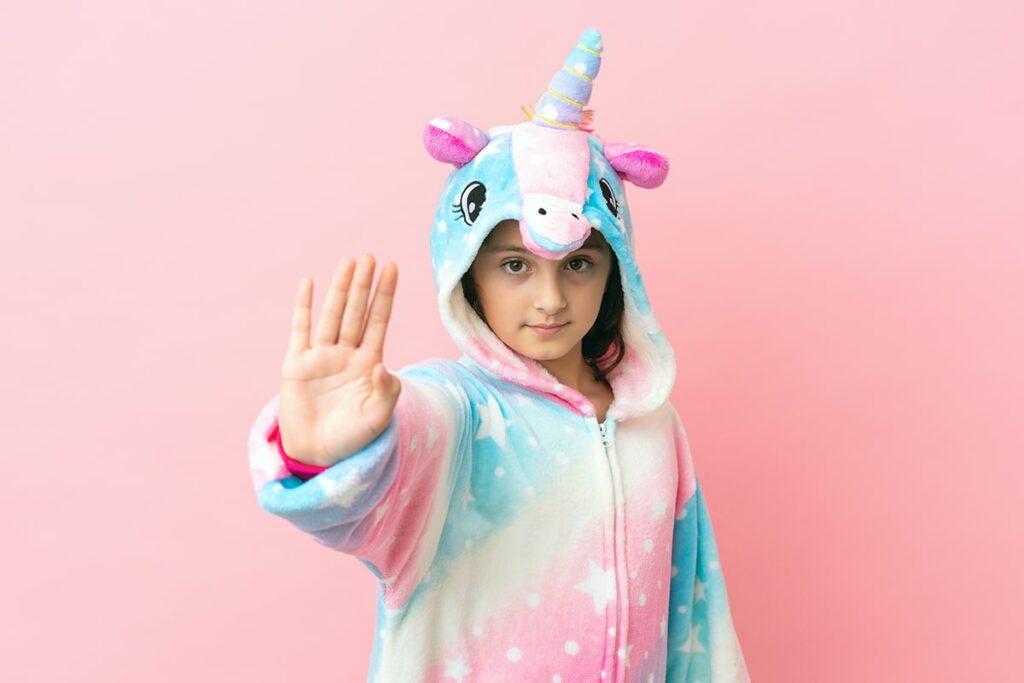
When it comes to your kids, parents need to consider a lot of things when making a change, like transitioning out of onesies. One of the biggest ones for younger kids, infants, and toddlers is whether they will be warm enough or refuse it.
Will My Child Be Warm Enough Without an Onesie?
Concerning how warm your kid will be without a onesie is quite valid. Toddlers are prone to catching colds if their body temperature isn’t regulated properly, something that a onesie takes care of.
However, there are plenty of ways that parents like you can ensure your kid is warm even without a onesie. Here are some tips:
- Layering Clothing:
- Instead of wearing a single layer, put on more layers to keep your child warm.
- Go with the triple-layer solution I shared above if the weather is really cold.
- Mix and match to ensure your child’s body temperature is properly maintained.
- Choose Warm Fabrics:
- The clothing you pick for your child should have materials like fleece, wool, or thick cotton.
- All of them have excellent heat retention properties, perfect during cooler weather.
- Use Sleep Sacks or Wearable Blankets:
- While your kid is transitioning from onesies, have them sleep in sleep sacks or wearable blankets.
- They will keep them warm and help them transition out of onesies.
- Invest in Thermal Pajamas:
- Two-piece thermal pajamas are an excellent alternative during the nighttime.
- They keep the child warm and allow for greater movement during sleep.
- Accessorize for Cold Weather:
- If parents want to warm up their kids, they can put on accessories like socks, slippers, and hats.
- Each item can keep your kid a bit warmer and a lot when put together.
What If My Child Refuses to Wear Anything Else?
It’s common for toddlers to refuse to wear anything other than their onesies, but parents must be patient. Here are some tips to ease them into the transition:
- Gradual Transition:
- Don’t just jump right into two-piece outfits. Instead, be slow and steady during the transition.
- Start off small by just letting them try them on and move on from there.
- This will help make the transition seem less daunting to toddlers.
- Let Them Choose:
- Making the transition seem more like their choice will help alleviate a lot of the stress.
- Get them involved in picking their dress and when to wear them.
- This can make the transition more exciting and give them a sense of control.
- Make It Fun:
- Parents need to make all learning activities seem like a game for toddlers.
- This will help make the learning process easier and more engaging for them.
- I recommend dress-up games with superheroes and movie characters.
- Address Emotional Attachment:
- Positive reinforcement and suggestions will help kids easily let go of their onesies.
- Let them keep one or two favorite onesies for comfort.
- Introduce Comfortable Alternatives:
- Whatever clothing toddlers transition to needs to be soft and stretchy.
- This will ensure the clothes are comfortable for them and make them more willing to wear them instead of onesies.
Suppose the transition seems to cause your child a lot of stress and anxiety. In that case, I recommend visiting your pediatrician or child psychologist. They can provide additional strategies and support to help your child adjust.
Frequently Asked Questions (FAQs)
1. What age do most kids stop wearing onesies?
Most kids stop wearing onesies between ages 2 and 4, depending on growth, preferences, and potty training progress. Taller toddlers may outgrow them sooner, while others may wear them longer for comfort.
2. Are onesies safe for toddlers?
Yes, onesies are safe if they fit well and don’t restrict movement. Choose breathable fabrics like cotton and avoid loose buttons or choking hazards. For sleepwear, ensure they meet safety standards.
3. Can my child wear onesies to daycare or preschool?
Check the daycare’s dress code—some prefer two-piece outfits for easier diaper changes or potty training. Onesies may be better suited for bedtime or at-home wear.
4. What should my child wear to bed instead of a onesie?
Two-piece pajama sets, nightgowns, or sleep sacks are great alternatives. Look for soft, breathable fabrics like cotton or bamboo to keep your child comfortable and warm.
Conclusion
Kids stop wearing onesies frequently, typically between the ages of two and four and completely from five and up. However, this is just a suggestion and not a fact. This is so because kids all develop at their own pace, and transitioning from onesies is affected by many factors.
Parents need to monitor their child’s growth, preferences, and developmental milestones before they start the transition. When their children are ready to move on from onesies, parents need to be patient and calm and proceed at a slow and steady pace.
Alternatives to onesies are usually two-piece outfits, but there are other choices. Ensure your child is comfortable with any of them before making them a regular thing. And as always, trust your instincts as a parent—you know your child best!



